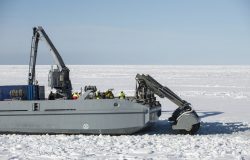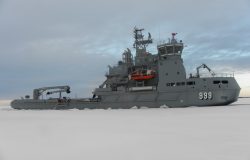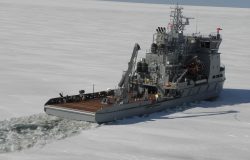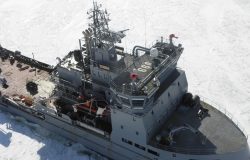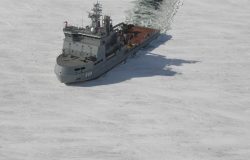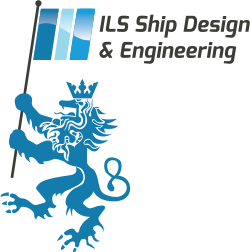A multipurpose vessel operated by the Finnish Navy
Louhi is a multipurpose vessel owned by the Finnish Environment Agency and operated by the Finnish Navy. The vessel has a very broad operational profile. In its daily work, it works in manifold naval duties. It can work e.g. as a diving support vessel and as a cable-layer. It is also equipped with modern oil and chemical response equipment and a large oil recovery capacity, and is also capable of firefighting, search and rescue and emergency towing. The ship’s ice class is 1 A Super, which means that it can navigate independently even in difficult ice conditions. Its home port is the Upinniemi naval base.
The acquirement of Louhi was preceded by a long survey and research work related to the need to have more oil response capacity to protect Finland’s sea and coastal areas. ILS was closely involved in that work as a consultant for the Finnish Environment Agency (SYKE). In this context, in cooperation with SYKE, we conducted the conceptual design of an oil-prevention icebreaker based on a Fennica-type reamer hull shape. However, after the shipyards’ bidding round, the vessel type was seen as too expensive. The operational profile combination (escort icebreaker and OSRV) was also considered too narrow. In that case, a decision was made about the new ship’s broader multi-functionality. In the next step, in cooperation with SYKE and the navy, we created a concept for the ship, which later became Louhi.
The vessel’s conceptual design included SYKE’s requirements for the latest oil collection systems on the open sea and in ice conditions, as well as for search and emergency towing. The Navy’s requirements for operating as a maintenance and support ship in all seasons had to be taken into account as well. The ship’s hull shape was designed according to demanding icebreaking requirements, because a special requirement from SYKE obliged the ship’s icebreaking ability to enable it to come to the rescue in the event of a marine accident in all ice conditions that occur in Finnish coastal areas. The vessel was not designed as an escort icebreaker that would break the ice for merchant ships following it, but it had to be able to get to the rescue quickly itself, even in difficult ice fields. The ship was also equipped to act as a command ship in various accident situations.
The ship’s basic design included the planning and supervision of extensive model tests. In particular, model tests were used to verify the ship’s sea characteristics in a storm and also the operation of the large wave damping channel planned together with Akateemiset Konsultit Oy for the ship’s oil collection. No ice model tests were conducted. The design of the hull shape was based on the ILS experience as an icebreaker designer. After the ship was completed, full scale open water and icebreaking tests were conducted to determine the ship’s operational capability. Particularly interesting were the tests of the wave damping channel outside Bornholm in the autumn storm in connection with the joint oil spill exercises of the Baltic Sea countries. The damping channel jointly patented by Akateemiset Konsultit Oy, SYKE and ILS met expectations even better than what could be expected based on model tests.
The vessel was built by UKI Workboat Ltd, which was able to deliver the difficult special vessel exactly according to the requirements in the agreed schedule.


